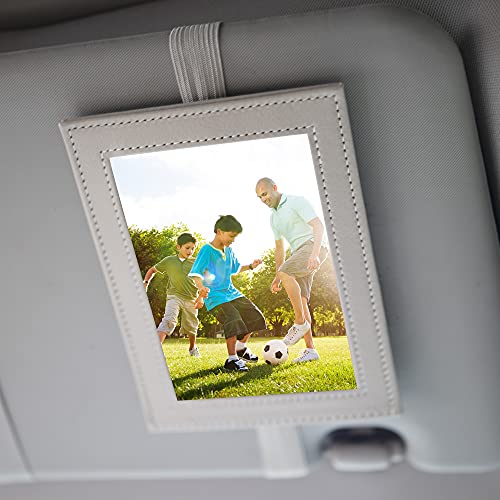Discovering frame damage on a vehicle can be a gut-wrenching moment for any car owner. We’ve seen countless buyers walk away from deals when they learn about structural issues, and for good reason. Frame damage isn’t just a cosmetic concern—it’s a serious red flag that can dramatically impact a vehicle’s safety, performance, and resale value.
When it comes to selling or trading in a car with frame damage, you’re looking at a potential value drop of 30% to 70% compared to similar undamaged vehicles. That means a $20,000 car might suddenly be worth just $6,000 to $14,000. We’ll break down exactly what factors determine where your vehicle falls on this spectrum and how you can navigate this challenging situation to minimize your financial loss.
Understanding Frame Damage in Vehicles
Frame damage represents a important structural issue that compromises a vehicle’s integrity and safety. Car frames function as the foundation upon which every other component depends, making any damage to this structure particularly concerning for owners and potential buyers.
Types of Frame Damage
Frame damage varies in severity and type, affecting vehicles differently depending on the exact issue. Bent frames occur when the vehicle’s structural components warp from their original position, often resulting from moderate to severe collisions. Cracked frames represent more serious damage where the actual metal has fractured, significantly weakening the structural integrity. Twisted frames happen when different parts of the frame rotate in opposite directions, commonly seen in vehicles that have been in rollover accidents. Sagging frames typically develop over time due to metal fatigue or rust deterioration, causing the middle section to droop. Mashed frames result from high-impact collisions that compress sections of the frame, severely compromising structural strength. Each type affects vehicle safety and functionality differently, with repair possibilities varying based on damage severity.
How Frame Damage Occurs
Frame damage typically results from exact events or conditions that apply extraordinary force to a vehicle’s structure. Collision accidents represent the most common cause, particularly side-impact and front-end crashes that direct force directly into frame components. Severe off-roading subjects vehicles to extreme conditions beyond their design parameters, causing frame stress when bouncing over rough terrain or becoming high-centered on obstacles. Environmental damage develops gradually, with rust corroding frame rails in regions using road salt or areas with high humidity. Manufacturing defects occasionally lead to premature frame issues when the metal quality or welding processes don’t meet standards. Improper towing or hauling excessive loads can strain frames beyond their capacity, bending or weakening structural components over time. Flood damage often leads to hidden frame issues as water exposure accelerates corrosion in hard-to-inspect areas. Understanding these damage sources helps owners identify potential problems before they compromise safety or dramatically reduce vehicle value.
The Financial Impact of Frame Damage
![Frame Damage and Car Value: How Much Will Your Vehicle's Worth Drop? [Expert Guide] 4 Frame Damage and Car Value: How Much Will Your Vehicle's Worth Drop? [Expert Guide] 3](https://autorepairlebanontn.com/wp-content/uploads/2025/05/754b2b26-a750-4816-a189-9e473e1bfa2b1tJ7uEX1YreBf52cxAPAJ.jpg)
Frame damage to a car significantly impacts its value, often causing substantial financial losses for owners. The drop in value depends on multiple factors including damage severity, repair quality, and market perception.
Average Percentage of Value Loss
Frame damage devaluation typically falls within exact ranges based on the extent of structural compromise. Minor frame issues reduce a vehicle’s value by 15% to 20%, which can translate to thousands of dollars even for moderately priced cars. Considerable or severe frame damage causes much steeper declines, ranging from 30% to 50% of the vehicle’s pre-damage value. These percentages represent real financial impact – a $30,000 vehicle with severe frame damage might suddenly be worth only $15,000 to $21,000 in the marketplace.
Factors That Influence Devaluation
Severity of damage plays the primary role in determining value loss, with more extensive structural compromise leading to greater devaluation. Vehicle type and brand significantly affect how much value is retained after frame damage – luxury vehicles often maintain more of their worth compared to economy models with identical damage. Quality of repairs directly influences buyer confidence and vehicle value; properly executed repairs to manufacturer standards minimize devaluation, while subpar work can cause an additional 5-10% reduction beyond the initial damage impact.
State-exact regulations also affect valuation, as some jurisdictions use exact thresholds (commonly 75% of vehicle value) to determine total loss status. Market perception creates another valuation variable, as potential buyers’ concerns about safety and future problems influence what they’re willing to pay. Transparency about damage history and comprehensive repair documentation can partially mitigate these concerns, though rarely eliminates the value reduction entirely.
Frame Damage vs. Diminished Value Claims
![Frame Damage and Car Value: How Much Will Your Vehicle's Worth Drop? [Expert Guide] 6 Frame Damage and Car Value: How Much Will Your Vehicle's Worth Drop? [Expert Guide] 5](https://autorepairlebanontn.com/wp-content/uploads/2025/05/754b2b26-a750-4816-a189-9e473e1bfa2bszSO0wLCV9iF6yy43qbPK.jpg)
Frame damage creates a direct impact on a vehicle’s value, while diminished value claims represent the process of recouping some of that lost value. Understanding the relationship between these two concepts helps car owners navigate the financial aftermath of structural damage and potentially recover some of their losses.
Insurance Coverage Considerations
Insurance companies evaluate frame damage history carefully when determining coverage options for affected vehicles. Many insurers may restrict full coverage for cars with previous frame damage, even after professional repairs have been completed. The diminished value claim process typically requires professional appraisal to establish the exact percentage of value loss, which varies based on damage specifics and vehicle type. Documentation of high-quality repairs meeting manufacturer standards can significantly impact an insurer’s willingness to provide comprehensive coverage. Some car owners face challenges when attempting to secure adequate insurance protection, as certain providers view previously frame-damaged vehicles as higher-risk assets regardless of repair quality.
Selling a Car With Frame Damage
![Frame Damage and Car Value: How Much Will Your Vehicle's Worth Drop? [Expert Guide] 8 Frame Damage and Car Value: How Much Will Your Vehicle's Worth Drop? [Expert Guide] 7](https://autorepairlebanontn.com/wp-content/uploads/2025/05/754b2b26-a750-4816-a189-9e473e1bfa2bpMk7kRL66-dPNDU03ywJW.jpg)
Selling a vehicle with frame damage presents unique challenges compared to selling an undamaged car. The market perception of structural damage significantly impacts both the selling process and the final transaction value.
Private Sale vs. Dealer Trade-In
Private sales of frame-damaged vehicles often face considerable resistance from potential buyers. Many prospective purchasers completely avoid cars with documented frame damage due to safety concerns and performance issues. When listing such vehicles online, services like Carfax and AutoCheck typically display the accident history prominently, making it difficult to conceal the damage from informed buyers. Those willing to purchase may demand price reductions of 30-50% compared to similar undamaged vehicles.
Dealer trade-ins offer a more straightforward but financially less favorable option. Dealerships typically value frame-damaged cars at 30-50% below market rates for equivalent undamaged vehicles. Many dealers won’t even place these vehicles on their retail lots, instead sending them directly to auction where they’ll fetch wholesale prices. This practice reflects dealers’ hesitation to assume the liability and marketing challenges associated with structurally compromised vehicles.
Disclosure Requirements
Transparency forms the cornerstone of legally and ethically selling a frame-damaged vehicle. Sellers must disclose any structural damage history to potential buyers, regardless of how well the vehicle has been repaired. Providing comprehensive documentation of repairs helps build buyer confidence and may slightly offset the inevitable value reduction. This documentation should include detailed repair records showing that qualified professionals conducted the work according to manufacturer specifications.
Buyers examining cars with frame damage history should conduct thorough inspections and carefully review vehicle history reports. Reports from services like Carfax and AutoCheck reveal accident histories that might indicate frame damage, even if not explicitly mentioned by sellers. Failure to disclose known frame damage can result in legal consequences for sellers, including lawsuits for misrepresentation or fraud in many jurisdictions.
Assessing Frame Damage: Professional Evaluation
![Frame Damage and Car Value: How Much Will Your Vehicle's Worth Drop? [Expert Guide] 10 Frame Damage and Car Value: How Much Will Your Vehicle's Worth Drop? [Expert Guide] 9](https://autorepairlebanontn.com/wp-content/uploads/2025/05/754b2b26-a750-4816-a189-9e473e1bfa2bTss7AiaFGbEaRbGt9VJbe.jpg)
Professional evaluation of frame damage is essential for accurately determining a vehicle’s condition and potential value loss. Licensed technicians have the expertise and equipment necessary to identify structural issues that might otherwise go unnoticed.
Signs of Improper Frame Repair
Detecting improper frame repairs helps protect both safety and investment value. Uneven tire wear often serves as the first indicator of an inadequately repaired frame, with tires wearing down faster on one side than the other. Alignment problems manifest as the vehicle pulling to one side during normal driving conditions, creating an unsafe driving experience.
Unusual noises such as creaking or popping when driving over bumps suggest compromised structural integrity in the repaired sections. Doors and windows that no longer close properly indicate the frame isn’t maintaining its original dimensions. Visible signs like mismatched paint, uneven panel gaps, or weld marks in unusual locations point to repairs that weren’t properly completed.
Performance issues frequently accompany poor frame repairs, with the car handling differently at higher speeds or during turns. A vehicle with improper frame repairs may not perform adequately in subsequent collisions, posing important safety risks to occupants. These structural weaknesses compromise the vehicle’s designed crumple zones and energy absorption capabilities, potentially leading to more severe injuries in accidents.
When purchasing a used vehicle, we recommend bringing along a trusted mechanic who can identify these telltale signs, potentially saving thousands in future repair costs and preventing safety hazards.
Mitigating Value Loss After Frame Damage
![Frame Damage and Car Value: How Much Will Your Vehicle's Worth Drop? [Expert Guide] 12 Frame Damage and Car Value: How Much Will Your Vehicle's Worth Drop? [Expert Guide] 11](https://autorepairlebanontn.com/wp-content/uploads/2025/05/754b2b26-a750-4816-a189-9e473e1bfa2bwz1ZmbSR34VZ99HfbIWoz.jpg)
Frame damage doesn’t have to devastate your vehicle’s value completely. Strategic actions can help minimize the financial impact and preserve as much of your car’s worth as possible.
Quality Repairs and Documentation
Professional repairs by certified technicians form the foundation of value retention for frame-damaged vehicles. High-quality frame repairs address both structural integrity and safety concerns, potentially reducing value loss from 50% to a more manageable 15-20%. Documentation plays an equally crucial role in this process. Comprehensive repair records from reputable shops, including detailed before-and-after reports, photographs, and certification statements, provide essential proof to potential buyers and insurance companies. These records demonstrate that the vehicle has been properly restored according to manufacturer specifications, helping to rebuild confidence in the car’s reliability and safety. Some insurance companies and buyers view properly documented repairs more favorably, sometimes resulting in thousands of dollars of retained value compared to vehicles with questionable repair histories.
Diminished Value Claims
Filing a diminished value claim offers an opportunity to recover some financial losses when frame damage wasn’t your fault. These claims specifically address the difference between your vehicle’s pre-accident value and its reduced worth after repairs. Most states permit diminished value claims against the at-fault driver’s insurance company, potentially recovering 15-30% of the vehicle’s lost value. Professional appraisers can precisely calculate this diminished value by examining the extent of frame damage, repair quality, and market perception factors. Insurance companies typically require substantial documentation, including repair receipts, professional value assessments, and comparative market analyses of similar vehicles with and without damage history. Successful claims often depend on thorough documentation and persistent negotiation with insurance adjusters.
Transparency in Future Transactions
Honesty about your vehicle’s frame damage history creates trust and prevents potential legal complications during resale. Full disclosure includes providing repair documentation, sharing accident reports, and allowing potential buyers to conduct independent inspections. Transparent selling practices may initially seem disadvantageous by highlighting the vehicle’s history, but they eventually protect sellers from future liability claims while establishing credibility with buyers. Many states legally require disclosure of important structural damage, with penalties for concealment potentially exceeding any short-term financial gain from hiding the information. Selling to specialty dealers who refurbish damaged vehicles sometimes offers better returns than traditional dealerships, which might discount frame-damaged cars by 30-50% regardless of repair quality.
Conclusion
Frame damage significantly impacts your car’s value with devaluation ranging from 15% to 70% depending on severity repair quality and vehicle type. The financial hit doesn’t have to be devastating though.
We’ve shown that taking proactive steps makes a real difference. Quality repairs by certified technicians thorough documentation and transparency with potential buyers can minimize your losses. Remember that filing diminished value claims and exploring specialty dealers are viable options too.
While frame damage will always affect your car’s worth smart decisions can transform a potential financial disaster into a manageable situation. Your approach to repairs documentation and sales strategy eventually determines how much of your vehicle’s value you’ll retain.
Frequently Asked Questions
How much value does a car lose with frame damage?
A car with frame damage typically loses 30-70% of its value. The exact percentage depends on the severity of damage, vehicle type, and repair quality. Minor frame issues might reduce value by 15-20%, while severe damage can lead to 30-50% depreciation. For example, a $30,000 vehicle with severe frame damage might only be worth $15,000-$21,000 afterward.
What types of frame damage are most common?
The most common types of frame damage include bent, cracked, twisted, sagging, and mashed frames. Each type affects the vehicle differently but all compromise structural integrity and safety. Bent frames are the most frequently seen issue, often resulting from side impacts, while cracked frames typically occur from severe collisions or metal fatigue.
Can a car with frame damage be safely driven?
Driving a car with frame damage is generally not safe and not recommended. Frame damage compromises the vehicle’s structural integrity, affecting handling, alignment, and crash protection capabilities. Even if the vehicle seems to drive normally, damaged frames cannot properly absorb impact energy in subsequent accidents, putting occupants at significant risk.
Will insurance cover a car with previous frame damage?
Insurance companies typically restrict full coverage for vehicles with previous frame damage, regardless of repair quality. Most insurers will offer limited coverage options or higher premiums, viewing these vehicles as higher-risk assets. When purchasing a used car, insurers may require documentation of professional repairs and inspections before providing comprehensive coverage.
How can I tell if a used car has frame damage?
Signs of frame damage include uneven tire wear, alignment problems, doors that don’t close properly, uneven panel gaps, and mismatched paint. Check for unusual noises while driving, strange vibrations, and pulling to one side. Always inspect the vehicle’s undercarriage for welds, new metal, or repair marks. A professional inspection and vehicle history report provide the most reliable assessment.
Can frame damage be properly repaired?
Yes, frame damage can be properly repaired in many cases, but the repair quality significantly impacts safety and value. Repairs must be performed by certified technicians using manufacturer-approved methods and equipment. Modern frame straightening machines and welding techniques can restore structural integrity, but severe damage may never be completely remediated to factory specifications.
Should I buy a car with repaired frame damage?
Purchasing a car with repaired frame damage comes with significant risks, but can offer substantial savings. If considering such a purchase, ensure repairs were professionally done, obtain comprehensive documentation, and have an independent inspection performed. Be prepared for reduced resale value and potential insurance limitations. For many buyers, the 30-50% price reduction doesn’t outweigh the long-term drawbacks.
How do I file a diminished value claim for frame damage?
To file a diminished value claim, first document the pre-accident value of your vehicle with market research. Obtain professional appraisals demonstrating the vehicle’s reduced value after repairs. Submit your claim to the at-fault driver’s insurance company with all supporting documentation. Most states allow these claims, but success varies by jurisdiction and circumstances. The process typically requires persistence and thorough documentation.
Does frame damage always appear on a vehicle history report?
Frame damage doesn’t always appear on vehicle history reports, particularly if repairs were made without insurance claims or at independent shops that don’t report to databases. While major collision repairs from insurance claims typically appear on reports like Carfax, many frame damage incidents go unreported. This is why professional inspections remain essential when purchasing used vehicles, regardless of clean history reports.
How can I minimize value loss after frame damage?
To minimize value loss after frame damage, ensure repairs are performed by certified technicians using manufacturer-approved methods. Keep comprehensive documentation of all repairs, including before and after photos. File a diminished value claim if applicable. When selling, be transparent about the damage history while emphasizing the quality of repairs. Consider specialty dealers who refurbish damaged vehicles rather than traditional dealerships.

![Frame Damage and Car Value: How Much Will Your Vehicle's Worth Drop? [Expert Guide] 2 Frame Damage and Car Value: How Much Will Your Vehicle's Worth Drop? [Expert Guide] 1](https://autorepairlebanontn.com/wp-content/uploads/2025/04/4j1foloXbZRBL6z1lrqFo.jpg)














